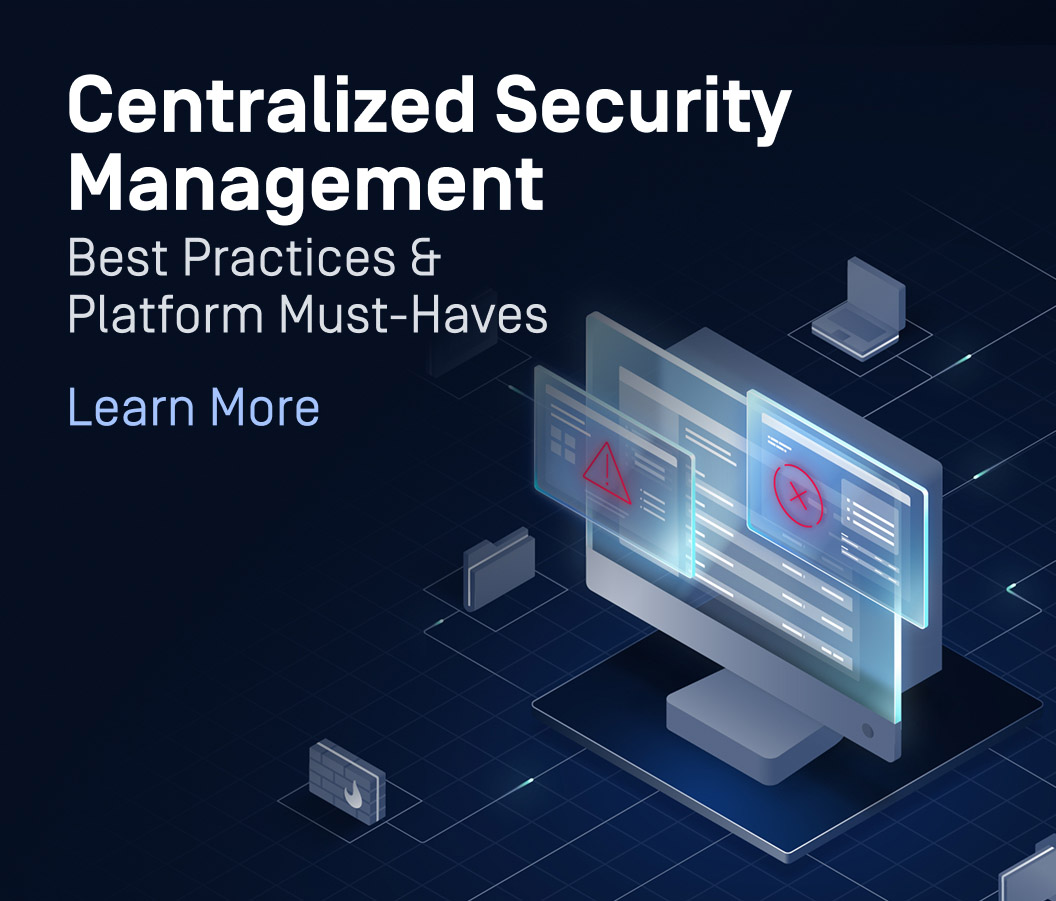Cybersecurity compliance refers to adhering to specific rules, regulations, and best practices designed to safeguard sensitive information and systems from cyber threats. It ensures an organization’s security measures meet regulatory standards and guidelines. These standards are designed to protect the integrity, confidentiality, and availability of sensitive data from various cyberthreats.
To protect sensitive information from potential breaches, certain security controls and measures must be implemented. These measures include firewalls, encryption protocols, regular software updates, and reoccurring audits and assessments. Together these processes ensure that the security controls are working properly, and that the organization is meeting its regulatory requirements.
In this blog, we’ll not only explore the importance of cybersecurity compliance, but also uncover what it takes to stay compliant with key regional regulations, what the future holds for cybersecurity compliance, and how your organization can successfully stay ahead of the curve.
Table of Contents
- Why is Compliance Important in Cybersecurity?
- Key Regulations and Standards
- Implementing Cyber Compliance Frameworks
- How to Start a Successful Program: A Checklist
- The Future of Cybersecurity Compliance
- FAQs
Why is Compliance Important in Cybersecurity?
Though it may seem like a stringent set of regulations imposed by authorities, cybersecurity compliance is a necessity when it comes to sustained business prosperity. No organization is completely immune from experiencing a cyberattack, which is why complying with cybersecurity standards and regulations is so critical. Cybersecurity compliance can be a determining factor in an organization's ability to achieve success, maintain smooth operations, and enforce comprehensive security policies.
In the United States, the Cybersecurity and Infrastructure Security Agency (CISA) has highlighted 16 critical infrastructure sectors (CIS) that are of utmost importance to protect. A breach within these sectors could have debilitating effects on national security, the economy, and overall public health and safety.
Maintaining compliance in these sectors is key to safeguarding sensitive data, like personal information and financial records, from unauthorized access or disruption. Compliance helps to maintain trust with clients, partners, and stakeholders, while non-compliance can lead to damaging reputation loss. Legal and regulatory requirements also mandate certain industries, which means non-compliance can attract hefty fines or legal action, not unlike Meta’s $1.3B fine for violating EU data privacy rules.
Compliance also ensures business continuity—even during a cyberattack—by preparing a response plan for attack recovery and system restoration. It's a shield against significant financial losses that can stem from data theft, business disruption, or costs linked to emergency attack response and recovery. Organizations demonstrating strong cybersecurity compliance can gain a competitive edge, especially in sectors where data security is a primary customer concern.
The implications of data breaches are far-reaching. They can rapidly evolve into intricate predicaments that inflict serious damage on an organization's reputation and financial stability. The ensuing legal proceedings and disputes resulting from a breach are becoming increasingly prevalent across industries.
Key Regulations and Standards for Cybersecurity Compliance
A multitude of regulations and standards govern cybersecurity compliance across various industries and across regions. Familiarizing yourself with these regulations and standards is essential to understanding and ensuring compliance. Here are some key regulations broken out by geographic region:

United States
HIPAA (Health Insurance Portability and Accountability Act)
This U.S. federal law protects sensitive health-related information. Entities that electronically transmit health information for specific transactions must comply with HIPAA's privacy standards. Organizations must implement robust security measures, including encryption, access controls, regular risk assessments, employee training, and the adoption of policies and procedures that safeguard the confidentiality, integrity, and availability of protected health information (PHI).
PCI-DSS (Payment Card Industry Data Security Standard)
A non-federal requirement aimed at securing credit card data. PCI-DSS applies to all merchants handling payment information, regardless of the volume of transactions or cards processed monthly. Organizations need to implement strong network security measures, including network segmentation, regular vulnerability assessments, use of secure coding practices, encryption of cardholder data, and strict access controls to protect payment card information and maintain a secure environment for cardholder data.
CCPA (California Consumer Privacy Act)
This state-specific law in the U.S. gives consumers more control over the personal information that businesses collect about them. It includes the right to know, the right to delete, and the right to opt-out of the sale of personal information. Organizations should implement measures such as data classification, access controls, encryption, data breach response plans, and regular security assessments to protect consumer personal information and ensure its privacy and security.
FISMA (Federal Information Security Management Act)
Governs U.S. federal systems that protect national security information, operations, and assets from potential breaches. FISMA outlines minimum security requirements for preventing threats to national-level agency systems. Organizations must implement cybersecurity controls, including risk assessments, continuous monitoring, incident response plans, security awareness training, and adherence to NIST (National Institute of Standards and Technology) standards and guidelines, to protect federal information systems and ensure the confidentiality, integrity, and availability of sensitive data.
SOX (Sarbanes-Oxley Act)
This U.S. federal law mandates that all publicly traded companies must establish internal controls and procedures for financial reporting to reduce corporate fraud. Organizations should establish and maintain strong internal controls, including access controls, data protection measures, regular audits, and monitoring of financial systems and processes, to safeguard financial data and prevent fraudulent activities that may impact financial reporting.
FERPA (Family Educational Rights and Privacy Act)
This U.S. federal law protects the privacy of student education records. Educational institutions must implement appropriate security measures such as data encryption, access controls, user authentication, regular data backups, and staff training to protect students' educational records and ensure the confidentiality and privacy of personally identifiable information (PII).
GLBA (Gramm-Leach-Bliley Act)
Also known as the Financial Services Modernization Act of 1999, GLBA requires financial institutions to explain their information-sharing practices to their customers and to safeguard sensitive data. Financial institutions must implement robust cybersecurity measures such as encryption, access controls, regular risk assessments, employee training, and incident response plans to protect customers' nonpublic personal information (NPI) and maintain the confidentiality and integrity of sensitive financial data.
NERC (North American Electric Reliability Corporation)
The North American Electric Reliability Corporation (NERC) Critical Infrastructure Protection (CIP) is a set of cybersecurity standards that are designed to ensure the security and reliability of the bulk power system (BPS) in North America. Electric utility companies must implement robust cybersecurity controls, including network segmentation, access controls, intrusion detection systems, incident response plans, and regular security audits, to protect critical infrastructure, ensure grid reliability, and safeguard against cyber threats and vulnerabilities.
Canada
Personal Information Protection and Electronic Documents Act (PIPEDA)
PIPEDA governs the collection, use, and disclosure of personal information by private-sector organizations in Canada. It establishes rules for consent, access, and data breach notification. Companies should implement strong cybersecurity measures, including encryption, access controls, regular risk assessments, data breach response plans, and privacy policies, to protect personal information, ensure its confidentiality, and maintain the privacy rights of individuals.
Europe
GDPR (General Data Protection Regulation)
This EU law governs data protection and privacy. It sets out a legal framework for the collection and protection of personal data of individuals based in the EU. Organizations should implement robust cybersecurity measures, including data encryption, access controls, privacy by design, regular risk assessments, data breach notification procedures, and adherence to GDPR principles, to protect personal data, respect individuals' privacy rights, and ensure compliance with the regulation's requirements.
Network and Information Security (NIS2) Directive
The NIS2 Directive extends and broadens the prior EU cybersecurity directive, NIS. Proposed by the European Commission, NIS2 aims to bolster EU network and information system security. It mandates critical infrastructure and essential service operators to implement security measures and report incidents to authorities. NIS2 strengthens EU-wide security requirements and covered sectors, enhancing supply chain security, streamlining reporting, and enforcing stricter measures and sanctions across Europe.
Data Protection Act 2018
The Data Protection Act 2018 incorporates the GDPR into UK law and provides additional provisions for the processing and protection of personal data in the UK. Organizations should implement robust cybersecurity measures such as data encryption, access controls, regular risk assessments, data breach response plans, and privacy policies to protect personal data, respect individuals' privacy rights, and ensure compliance with the Act's requirements for data protection and security.
ANSSI
The Agence Nationale de la Sécurité des Systèmes d'Information (ANSSI) is the French national cybersecurity agency responsible for protecting the country's critical digital infrastructure and data from cyberthreats. Its importance lies in its role in developing and enforcing cybersecurity policies, collaborating with public and private sectors, and enhancing national resilience against cyberattacks.
Asia Pacific
Personal Data Protection Act (PDPA)
The PDPA governs the collection, use, and disclosure of personal data in Singapore. It establishes rules and obligations for organizations handling personal data. Organizations should implement robust cybersecurity measures, including data encryption, access controls, regular risk assessments, data breach response plans, and privacy policies, to protect personal data, respect individuals' privacy rights, and ensure compliance with the Act's requirements for data protection and security.
Privacy Act
The Privacy Act regulates the handling of personal information by Australian government agencies and organizations. It sets out privacy principles and standards for data protection. Organizations should implement strong cybersecurity measures, including data encryption, access controls, regular risk assessments, data breach response plans, and privacy policies, to protect personal information, respect individuals' privacy rights, and ensure compliance with the Act's requirements for data protection and privacy.
Cybersecurity Law
China and South Korea’s Cybersecurity Laws focus on safeguarding national cybersecurity and protecting critical information infrastructure. They impose obligations on network operators, data localization requirements, and data protection provisions, and include requirements for data breach notification, cybersecurity audits, and obligations for operators of key infrastructure. Organizations should implement robust cybersecurity measures such as network security controls, data protection mechanisms, incident response plans, regular security assessments, and adhere to the specific requirements outlined in the respective laws, to safeguard critical information infrastructure, protect personal information, and ensure compliance with the cybersecurity regulations.
Personal Information Protection Act (PIPA)
PIPA is a Japanese law that regulates the handling of personal information. It outlines rules for the collection, use, and disclosure of personal data by businesses and organizations. Organizations should implement strong cybersecurity measures, including data encryption, access controls, regular risk assessments, data breach response plans, and privacy policies, to protect personal information, respect individuals' privacy rights, and ensure compliance with the Act's requirements for data protection and security.
Implementing Cybersecurity Compliance Frameworks
To achieve cybersecurity compliance effectively, organizations can adopt established frameworks that provide a structured approach.
These frameworks offer a roadmap for implementing security controls and aligning with regulatory requirements. Here are some popular options to consider:
CIP-007-6
CIP-007-6 is a cybersecurity standard outlined by NERC for critical infrastructure protection to address the requirements for systems security management in the bulk electric system. It outlines guidelines and controls for managing and protecting critical cyber assets within the electric utility industry.
NIST Cybersecurity Framework
The NIST framework provides guidelines for identifying, protecting, detecting, responding to, and recovering from cyberthreats. It promotes a risk-based approach to cybersecurity.
ISO 27001
ISO 27001 offers a systematic approach to managing information security risks. It provides a framework for establishing, implementing, maintaining, and continually improving an organization's information security management system.
CIS Controls
The Center for Internet Security (CIS) Controls provides a prioritized set of best practices for improving an organization's cybersecurity posture. It covers foundational security measures that are effective against a wide range of cyber threats.
COBIT
COBIT (Control Objectives for Information and Related Technologies) is a framework that helps organizations govern and manage their IT processes. It provides a comprehensive set of controls and metrics to achieve cybersecurity compliance.
SOC 2
SOC 2 (System and Organization Controls 2) is an auditing standard developed by the American Institute of CPAs (AICPA). It focuses on the security, availability, processing integrity, confidentiality, and privacy of data within a service organization.
How to Start a Successful Cybersecurity Compliance Program: A Checklist
While the saying "prevention is better than cure," is fundamental in the healthcare world, it's also fact when dealing with cybersecurity threats. Starting a successful cybersecurity compliance program is a crucial step for any organization seeking to prevent cyberthreats. Here's a step-by-step guide on what to do first:

1. Understand Compliance Requirements:
- Identify all relevant regulations and standards.
- Understand the specific requirements of each regulation.
2. Data Protection:
- Ensure encryption protocols are in place for data in transit and at rest.
- Implement strong access control measures.
- Conduct regular backups of critical data.
3. Risk Assessment:
- Perform regular risk assessments.
- Identify vulnerabilities in your systems.
- Develop a plan to address and mitigate identified risks.
4. Security Policies and Procedures:
- Document all cybersecurity policies and procedures.
- Ensure policies and procedures comply with relevant regulations.
- Regularly update policies and procedures to reflect changes in regulations or business operations.
5. Incident Response Plan:
- Develop and document an incident response plan.
- Ensure the plan includes steps for identifying, containing, and recovering from a breach, as well as notifying affected parties.
- Regularly test and update the plan as needed.
6. Employee Training:
- Conduct regular cybersecurity training for all employees.
- Ensure the training covers company policies and compliance requirements.
- Update training materials regularly to address new threats and regulatory changes.
7. Vendor Management:
- Assess the compliance of third-party vendors who have access to your data.
- Include compliance requirements in all vendor contracts.
- Regularly audit vendor compliance.
8. Audit and Monitoring:
- Implement systems for regular monitoring of your networks and systems.
- Conduct regular audits to ensure compliance.
- Document the results of all audits.
9. Continual Improvement:
Regularly review and update your compliance program.
- Update your program in response to changes in regulations or business operations.
- Use the results of audits and risk assessments to inform improvements to the program.
The Future of Cybersecurity Compliance
With the pace of technological change and the ever-evolving cyberthreat landscape, predicting future trends in cybersecurity compliance can feel impossible. However, some trends are worth noting:

AI and Machine Learning
These technologies are increasingly being utilized to bolster cybersecurity efforts. They help in automating threat detection, improving response times, and monitoring compliance in real-time.

Regulatory Expansion
As threats continue to evolve, so does the regulatory environment. Governments and governing bodies worldwide are increasing their efforts to protect consumers and businesses, leading to more stringent and expansive regulations. Companies are expected to stay abreast and comply with these evolving laws.

Cloud Security
As more businesses migrate their operations and data to the cloud, ensuring the security of cloud environments is paramount. Compliance regulations are being updated to reflect this trend, focusing more on cloud security and data protection.

Cybersecurity Training
There's an increased emphasis on training employees about cybersecurity risks and best practices. This is because human error is often a significant factor in data breaches. Regular training helps ensure that employees follow compliance guidelines and are aware of the latest threats.

Supply Chain Security
Recent high-profile cyber-attacks have highlighted the risk in the supply chain, expanding to include software supply chains and hardware supply chains. As a result, businesses are now required to ensure not just their compliance but also that of their vendors and partners.

Zero Trust Architecture
This approach, which involves not trusting any entity inside or outside the network by default, is gaining traction. Businesses are moving towards implementing Zero Trust architectures, necessitating updates to compliance strategies.
Conclusion
Cybersecurity compliance is no longer a suggestion, but a necessity; and it has been for a while now. By adhering to regulations, implementing best practices, and staying vigilant against evolving threats, organizations can safeguard their security systems. Cybersecurity compliance ensures the protection of sensitive information, fosters trust, and mitigates risks associated with data breaches and cyberattacks.
Stay proactive, invest in robust security measures, and educate employees to stay one step ahead in the ever-changing cybersecurity landscape.
Frequently Asked Questions (FAQ)
Q: What is cybersecurity compliance?
A: Cybersecurity compliance refers to the adherence to a set of rules, regulations, and best practices aimed at protecting sensitive information and systems from cyber threats. It involves implementing security measures, policies, and procedures to meet legal and industry-specific requirements.
Q: Why is cybersecurity compliance important?
A: Cybersecurity compliance is crucial for organizations to mitigate the risk of data breaches, protect customer information, maintain trust, and avoid legal and financial consequences. Compliance helps ensure that necessary security controls are in place and that organizations are meeting regulatory obligations.
Q: How can organizations achieve cybersecurity compliance?
A: Organizations can achieve cybersecurity compliance by conducting regular risk assessments, implementing appropriate security controls, training employees on cybersecurity best practices, conducting security audits, and keeping up with regulatory updates. It often requires a combination of technical measures, policies, and ongoing monitoring.
Q: What are the consequences of non-compliance with cybersecurity regulations?
A: Non-compliance with cybersecurity regulations can result in severe consequences such as financial penalties, legal actions, reputational damage, loss of customer trust, and potential business shutdown. Additionally, organizations may be required to notify affected individuals in the event of a data breach, leading to further reputational harm.
Q: Are there any benefits to cybersecurity compliance beyond regulatory requirements?
A: Yes, cybersecurity compliance goes beyond meeting regulatory requirements. It helps organizations enhance their overall security posture, reduce the likelihood of cyberattacks, improve incident response capabilities, and demonstrate a commitment to protecting sensitive information. Compliance can also create a competitive advantage and foster trust among customers and business partners.
Q: How often should organizations review their cybersecurity compliance efforts?
A: It is recommended that organizations review their cybersecurity compliance efforts on a regular basis, at least annually. However, the frequency may vary depending on industry regulations, changes in technology, and the organization's risk profile. Regular reviews help ensure ongoing compliance and identify areas for improvement.
Q: Can outsourcing IT services affect cybersecurity compliance?
A: Yes, outsourcing IT services can impact cybersecurity compliance. Organizations should carefully select and monitor third-party vendors to ensure they meet the required security standards. It's important to have appropriate contractual agreements, conduct due diligence on vendor security practices, and establish ongoing oversight to maintain compliance when outsourcing IT services.
Q: Is cybersecurity compliance a one-time effort?
A: No, cybersecurity compliance is an ongoing effort. The threat landscape evolves continuously, and new regulations may be introduced. Organizations must continuously assess risks, update security measures, and stay informed about changes in compliance requirements. Regular training and awareness programs for employees are also essential to maintain compliance.
Q: How can employees contribute to cybersecurity compliance?
A: Employees play a crucial role in cybersecurity compliance. They should receive training on security best practices, understand their responsibilities, and follow established policies and procedures. Employees should be vigilant about potential phishing attacks, use strong passwords, and report any security incidents or concerns promptly to the appropriate personnel.

